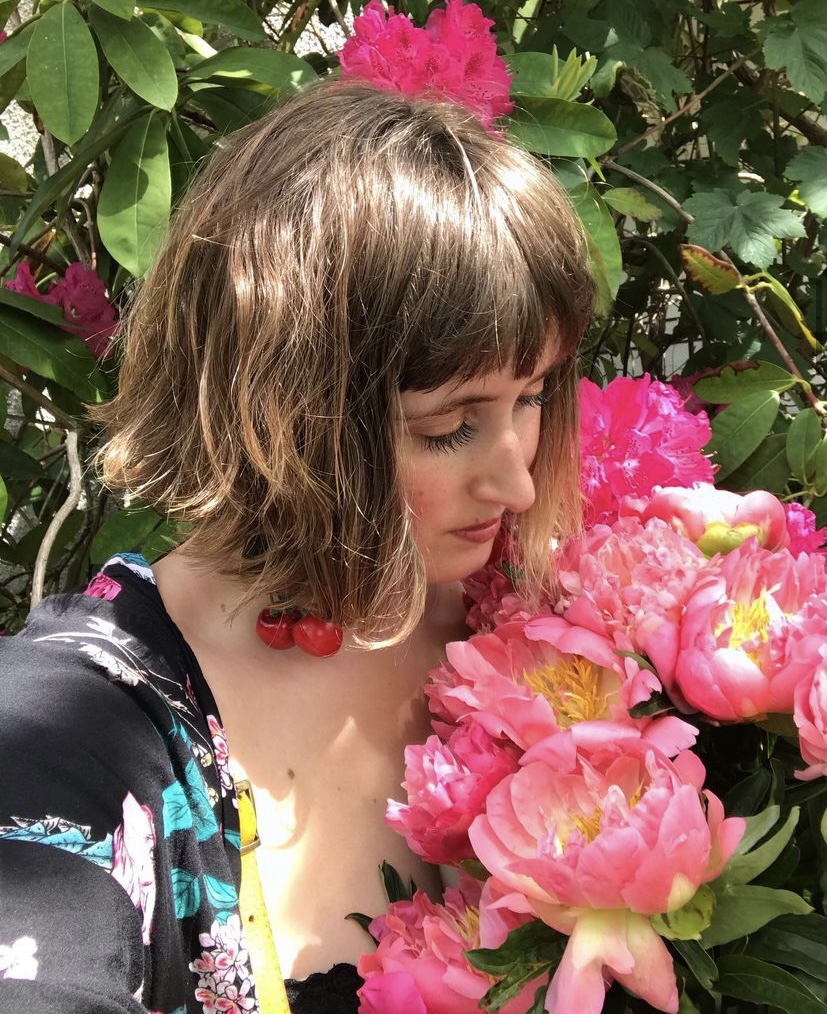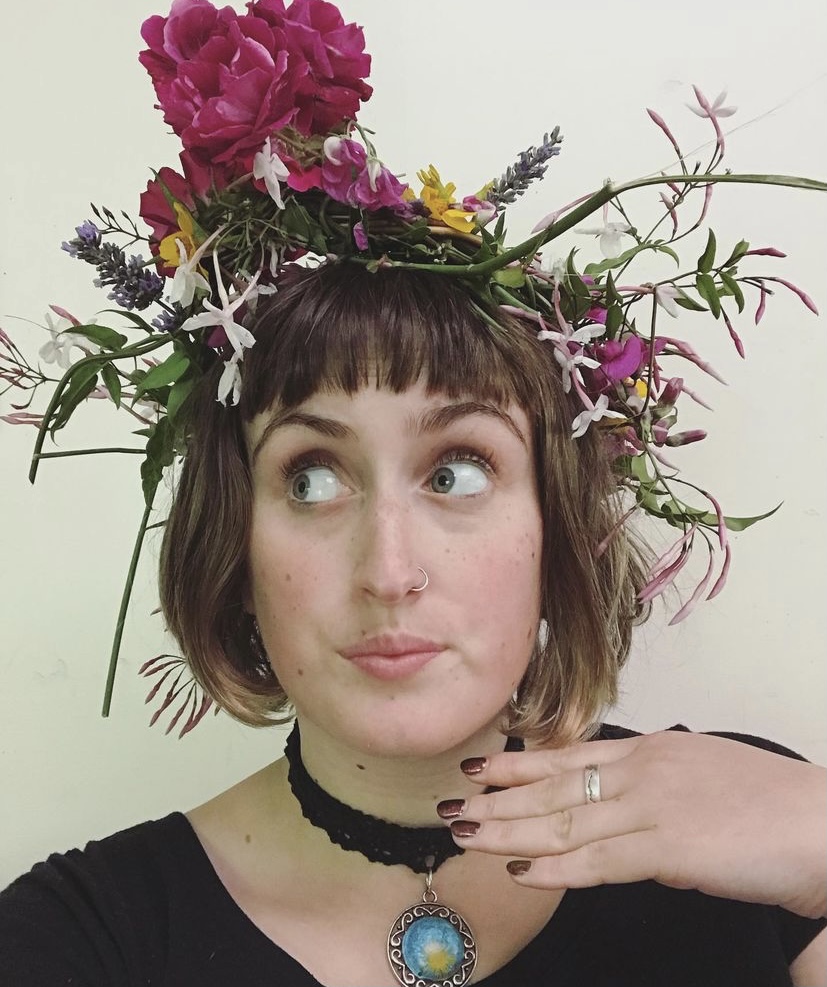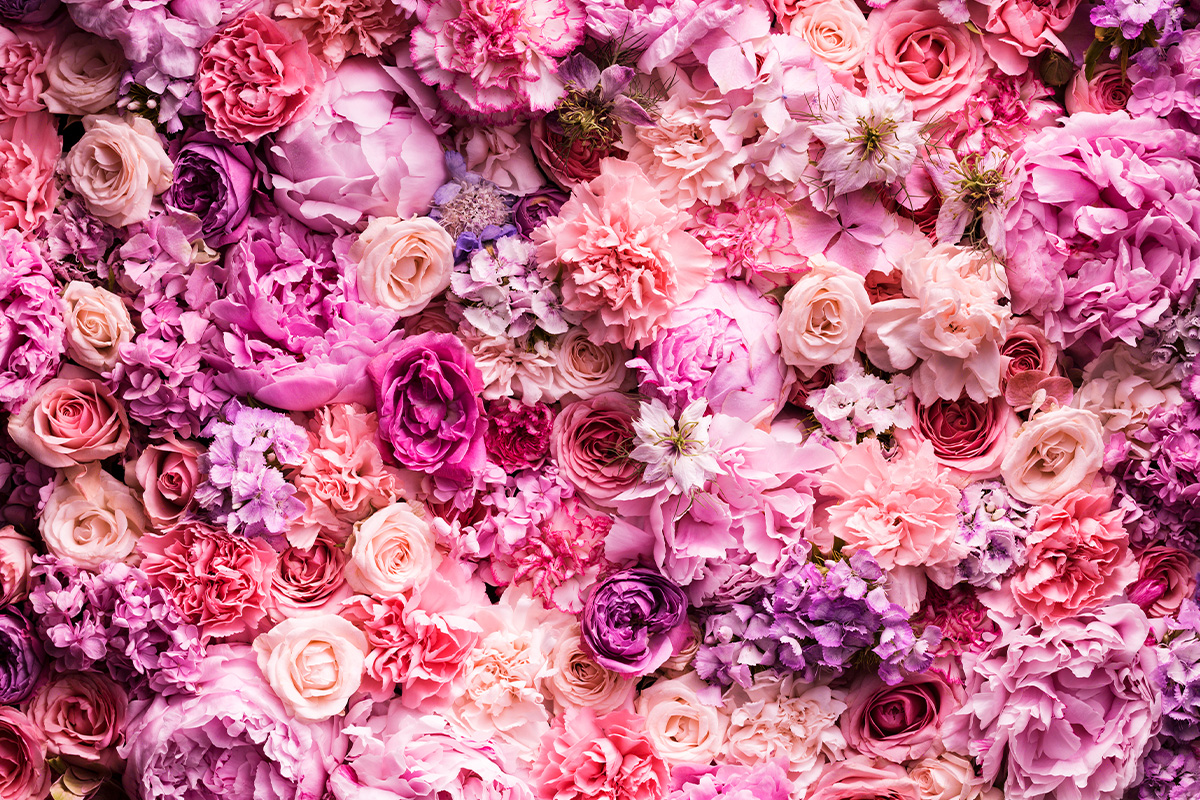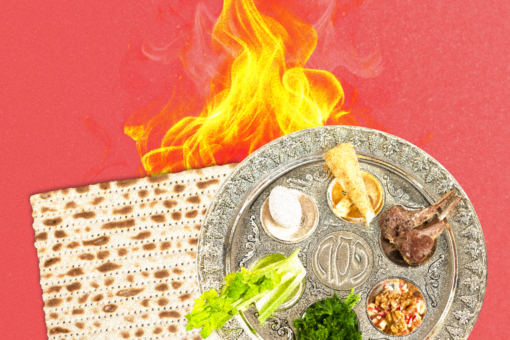I am always looking for ways to infuse more Jewish magic into my life, and as the weather warms and the earth blooms, spring is a time ripe with beautiful rituals. As diasporic people, much of our folk magic and plant medicine has been stripped from us. So, while I see these rituals as both fun and practical ways to embrace a new season, they are also my way of collecting practices that have been lost. And because so much of it is lost, we must trust our intuition and sense of play as we engage with Jewish magic.
1. Meet your plancestors

We all feel drawn to specific plants. It may be their color, the texture of the leaves, or a happy memory associated with the plant. But sometimes, we may not know why we are drawn to a plant. For me, one of these plants is peonies. I’ve always felt they have an energy that captivates me.
A couple of months ago, I talked to my Jewish magic circle and mentioned my love for peonies, but felt sad they aren’t a “Jewish plant.” My friend, Emma, immediately exclaimed, “Wait, but they are Jewish!” It turns out Jews have used peonies for hundreds of years to cure hysteria (which we now know to be a misogynistic and outdated ‘disorder’), clean up after a miscarriage, and treat period cramps. I was on my period that day, and the synchronicity was not unnoticed.
I believe plants can carry memories with them, and if we learn to listen, we can tap into our ancestral and plancestral history. Go on a walk in your area and see if you feel drawn to any plants. The chances are that your ancestors worked with that plant in their folk practices. A great way to check out this connection is through the text “Ashkenazi Herbalism: Rediscovering the Herbal Traditions of Eastern European Jews,” by Deatra Cohen and Adam Siegel, which includes information about 26 plants and herbs essential to Ashkenazi folk medicine.
2. Create a flower crown

The Torah is full of verses about flowers. In Isaiah, the prophet exclaims, “Yes, there will be an abundance of flowers and singing and joy!” I am taking that as my promise this spring.
In Israel, it is traditional to wear flower crowns for Shavuot, a harvest holiday in June (yes, it is still Spring in June). So why not make your flower crown and sing and be joyful (it’s hard not to be with a head full of flowers!).
A simple daisy chain may suffice, but why not give in to the spirit of abundance? To build a more elaborate flower crown, you need to start with a base of stems. Find a plant that is flexible and bendable. This may be a thick weed or a dandelion. Cut as close to the bottom of the stem as possible and begin braiding a couple of stems together. Depending on the length, when you get to the end of your braid, you may have to start with new stems and tie your new braid to the old one. Repeat till you have the base of your crown. Then it’s your chance to get creative: poke, weave and tie flowers throughout the base. Forage for daisies and dandelions. Maybe go wild and pick some daffodils or crocuses!
3. Add some Jewish magic to your spring walks
During the spring, I go on many walks, which often end up with me inevitably laying on a patch of grass, staring up at the trees. If you want to add some Jewish magic to your walks, or you’re daydreaming in the park, then try a podcast, some new music, or a book to two. Listen to Jewish Ancestral Healing, hosted by Taya Mâ Shere of the Kohenet Hebrew Priestess Institute. Or listen to the Jewitches podcast for exciting discussions of Jewish folktales and magic rituals. When you feel more like grooving, Dori Midnight, community-based healer and Jewitch, has an ever-growing playlist on both Spotify and Soundcloud entitled “Jewish Protection Magic Playlist.”
If you are more in a reading mood, I recommend Rabbi Jill Hammer’s “Return to the Place: The Magic, Meditation, and Mystery of Sefer Yetzirah.” The Sefer Yetzirah is an ancient mystical text where all the elements of water, fire, and air are referred to with feminine pronouns. In “Return to the Place,” Hammer transforms the text into a contemporary guide for meditative practice.
Or, if you are feeling like some magical Jewish fiction, Aden Polydoros’ dark but captivating book, “The City Beautiful,”is a great read. And if you are interested in poetry, keep your eyes out for my book of Jewish magic poetry, “Sheologies,”coming out soon.
And should you need a snack during your listening or reading, bring along a basket of strawberries, as they are said to have mystical Jewish healing properties. Also, they are delicious.
4. Freshen up your bulsika (Jewish protection magic pouch)
In a previous article about Jewish magic, I talked about how to create a bulsika, a small Sephardic Jewish protection magic pouch. I keep my bulsika in my purse at all times. When I need to feel grounded, I often touch the bag or take items out of it to hold, such as a written prayer, salt, lavender and a smooth stone from the beach.
Your bulsika is for you, to ground and protect yourself, so fill yours with items that feel right. But I like to keep my bulsika seasonal. In the Spring, I love drying flowers and filling my bulsika with them. I recently wandered into a park of magnolias and placed dried magnolias in my bulsika.
5. Lean into the magic of the Passover seder
Honestly, is there anything witchier and more magical than a Passover seder? We dip our fingers in wine, list out plagues and dip bitter herbs into salt. We leave wine cups on the table for our ancestors. And it is even said that opening the door for Elijah and saying his name keeps away demons.
So, let’s lean into the magical nature of Passover, particularly the seder plate. It has become common to put an orange on a seder plate to symbolize Jews whose voices are marginalized, specifically women and LGBTQ+ Jews. This year, why not garlic? In the past, Jews often carried garlic in their pockets for protection against the evil eye. Garlic is central to Jewish magic and can be a symbol for reconnecting with ancestral healing and promoting co-liberation. This practice was popularized by Dori Midnight, and she has an insert about it that you can add to your haggadah.
This spring, lean into the Jewish magical practices that resonate with you. Listen to the plants around you and meet your ancestors. Indulge in flower crowns and magically infused walks. Dry flowers for your bulsika and creatively engage with your Passover seder. My deepest wish for us all this season is that is one of an “abundance of flowers and singing and joy!”



